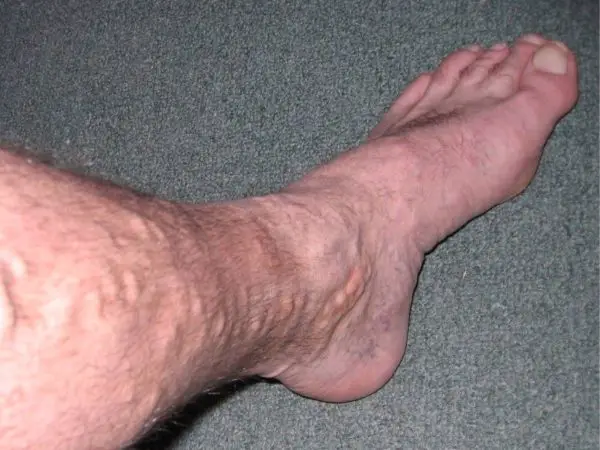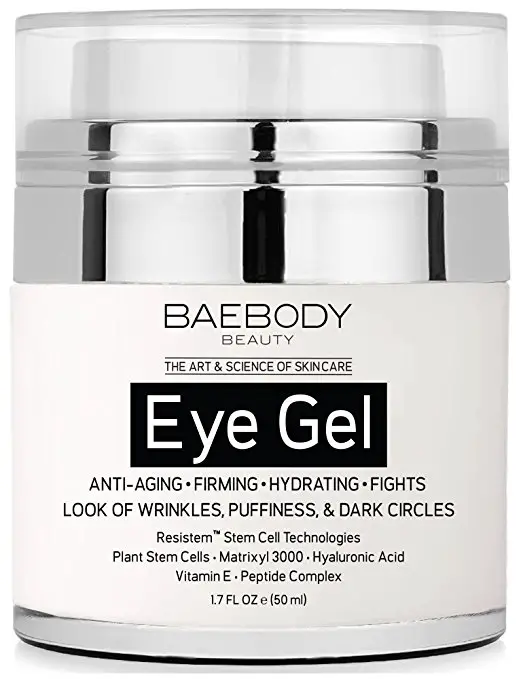Whoever thought that sagging skin on the legs would even happen? Sagging skin on the legs could be as a result of a huge weight loss or part of the ageing process. It could also be part of something more medically related. Therefore the question of how to improve sagging skin on legs arises.

Usually, the first port of call for many is to undergo surgery – be it invasive or non-invasive – in order to correct the sagging skin. But these days, there are safer and less expensive methods to get the same results. They may take longer but they will eventually get you there.
Some of the methods to improve sagging skin on legs are:
- Regular exercising
- Massaging the legs
- Firming lotions and creams
- Hydrating the skin
- Using supplements
- Exfoliating the skin
- Thighplasty
- Chemical peel
- Intense Pulsed Light therapy
- Laser peeling
- Ultrasound therapy
Table of Contents
Regular Exercising
What exercise routines help improve sagging skin on legs?
Running, jogging, brisk walking and jump rope are part of the routines that improve sagging skin on your legs. This is because one of the most viable means of closing the gap in the skin is to build some of the muscle mass underneath.
Other areas where there is sagging skin could also reap some benefits. By exercising like this at least 2-3 times every week, you will see positive changes in your abdomen, arms, thighs and even buttocks.
Before you begin any intense exercise workout regimen, be sure to clear it with your doctor. This is especially true if you have health issues or are advancing in age.
Massaging the Legs
How does massaging help sagging skin?
Massaging sagging skin improves the flow of blood, thereby giving your skin a better feel and look.
When there is a good flow of blood within the body, the nutrients and the right amount of oxygen needed are evenly distributed. This, in turn, keeps the skin supple and healthy, decreasing the chances of the appearance of sagging skin.
Massaging is a long-term method so it may not give you quick success. Well, no other method gives immediate results; you may have to combine it with other methods. But you will be glad you took this route in the long run.
Firming Lotions and Creams
Here is why firming lotions and creams are good at improving sagging skin on legs:
Firming lotions and creams contain ingredients, such as vitamins C and E, that promote the production of elastin and collagen, two proteins that are responsible for skin elasticity and firmness.
These vitamins are also antioxidants, which combat free radicals. Free radicals speed up the aging process so if your sagging skin is as a result of age, then these ingredients will slow its appearance greatly.
Many people usually try this method first before any other method. This is because using a firming lotion or cream has proven to give some quick, though temporary, results. And a quick fix isn’t such a bad idea when you are desperate for a solution.
[amalinkspro type=”cta-btn-css” ctabtn-id=”” asin=”B003CJP13W” apilink=”https://www.amazon.com/dp/B003CJP13W?tag=skincareguide-20&linkCode=osi&th=1&psc=1″ addtocart=”false” new-window=”true” nofollow=”true” alignment=”alignright”]Buy this NIVEA Skin Firming Cream on Amazon[/amalinkspro]
However, it is important to note that this method will require a long-term and consistent regimen to keep the effects visible. While it is effective for the most part, you may find that you want something more permanent.
Nevertheless, lotions and creams that firm up the skin are usually moisturizers. So look for one which contains these vitamins as well as hyaluronic acid and aloe vera.
Hydrating the Skin
How does water improve sagging skin?
Water improves sagging skin by helping with the flow of blood, which improves elasticity. It also keeps the skin from looking crepey and dull, and when skin is well hydrated, it is hard to get saggy.
The minimum amount of water recommended for an adult to drink every day is 8 glasses. Since the body is made of mostly of water and we are aways losing water through sweating and urinating, keeping hydrated is important. And 8 glasses is the baseline for an adult.
While moisturizing plays an important role in keeping your skin hydrated, it can only do so much for the feel and appearance of your skin. You still need to drink lots of water per day to help moisture work its magic from the inside to the outside.
Apart from keeping you hydrated, drinking a good amount of water will also keep you less hungry. This encourages losing weight if you still have a few pounds you want to get rid of. When this is combined with the right exercise routine, you find that losing weight and keeping the excess off is not such a big deal, while building your muscle tone.
Using Supplements
How do supplements improve sagging skin?
Supplements improve sagging skin by making up for any deficiency in necessary nutrients that boost the production of elastin and collagen. Collagen supplement can be taken to increase the production where there is not enough supply from other sources.
The same goes for other proteins and vitamins. These will also help tighten the skin. With time, you will find that your skin looks much better.
Exfoliating the Skin
Here’s how exfoliating helps improve sagging skin on legs:
Exfoliating regularly helps tighten loose skin by sloughing off dead skin cells to give the skin a chance to have a better flow of blood. Using the right body scrubs, best for your skin type, you will see quicker results.
With good blood circulation, oxygen and nutrients are properly carried to different parts of the body.
When this is done continuously over time, the look of the skin on the leg improves. It will take some time to happen but the loose skin will begin to tighten.
What’s more, the general look of your body will greatly improve. Exfoliation is not a daily routine; pick 2-3 days weekly to do this.
The Place of Cosmetic Surgery and Procedures
There are different treatments available for loose skin on the body generally and loose skin on the leg. Let us take a look at some of them…
Thighplasty
What is thighplasty and how does it help sagging skin on legs?
This is a cosmetic surgery that tightens sagging skin in the buttocks, thighs and upper legs. While it has proven effective, it will require some downtime and care for recovery. But it will help keep your legs in shape for years.
If you have any other area of your body that needs to be worked on, you could combine this procedure with lipectomy, which is a general body lift for contouring and tightening the skin.
Check out these interesting skin care product reviews/articles:
Clean and Clear® Oil-free Pore Cleanser Daily Acne Face Wash – In-depth Review
Neutrogena Oil-free Pink Grapefruit Acne Face Wash – In-depth Review
Clean and Clear® Acne Triple Clear Exfoliating Facial Scrub – Detailed Review
AcneFree Acne Cleanser – In-depth Review
Clean & Clear Blackhead Eraser Facial Scrub – Extensive Review
Bioré Charcoal Acne Scrub – Honest Review
Video: Explanation of Thighplasty
Watch as this surgeon uses one of his patients to explain what the procedure involves and what you stand to gain…
Chemical Peel
How does a chemical peel help sagging skin?
A chemical peel helps sagging skin by removing the topmost layer of skin to reveal newer and better-looking skin. The appearance of newer and younger-looking skin has the ability to reduce the look of loose skin. This is because it is usually smoother and looks less tired than the older layer.
Usually, this procedure is used on the neck and face so it may not one of your first go-to solutions for sagging leg skin. But you may want to consider going that way if you are in dire need of a remedy to the problem.
Intense Pulsed Light Therapy
Why and how IPL helps sagging skin on legs:
Intense Pulsed Light therapy, or IPL, is a heat process that warms up different layers of skin, like the deep and outer ones, in order to boost the production of collagen. If the cause of the saggy skin is age, then this will go a long way to help.
When done right, the effect will take you for some time before it starts to wear. So note that this is not a permanent solution.
Laser Peeling
What is laser peeling and how does it help improve sagging skin on legs?
Laser peeling is a well-known name for the procedure called ablative laser resurfacing. Much like a chemical peel, it also works at removing the topmost skin layer to reveal better-looking skin. While doing this, the heat from the procedure makes the layers right underneath the topmost one warm, helping collagen to form and firm up saggy skin.
Ultrasound Therapy
How does ultrasound therapy help improve sagging skin?
Ultrasound therapy, or Ultherapy for short, generally improves sagging skin by depositing intense ultrasound energy just beneath the surface of the skin. This boosts the body’s ability to create new collagen.
The body’s inability to quickly produce enough collagen is what leads to loose or sagging skin. Hence, when the production of this protein is boosted, the skin begins to look better with time.
Bottom Line – How to Improve Sagging Skin on Legs
Cosmetic or surgical procedures such as thighplasty, chemical peel and laser peeling will give you quicker results. But the best step is to exercise regularly.
Combining it with keeping the skin hydrated, using firming lotions and creams, exfoliating regularly, massaging the legs and using supplements will give much quicker and longer-lasting results than just exercising.
Additionally, watching what you eat can aid in weight watch. Diet plays a role in making or marring what we look like. Do more of whole grains, fibers, vegetables, fruits and fatty acids in your meals. Cut out as many carbohydrates and fats as possible.
Generally, your lifestyle affects your health as well as your skin. Excessive tanning and smoking plus too much sun exposure could make your skin look less than what it should. If you have to be out in the sun, use protective clothing and a good sunscreen. But cut out smoking and reduce tanning procedures. These will reduce the chances of having such a problem again in the future.
Click here to read these interesting articles…
What Deodorant Is Good for Sensitive Skin – Clear Answer
What Is the Best Laser Treatment for Skin Tightening – Honest Answer
Skin After Waxing [Problems, Solutions & Care]
Skin After Weight Loss [Problems & Solutions]
Skin After Liposuction [Problems, Solutions & Care]
How to Improve Sagging Skin on Legs – Frequently Asked Questions
How Can I Tighten Skin on My Legs Naturally?
To tighten skin on your legs naturally, here are a few methods:
- Cucumber and rosemary oil
- Honey and egg-white
- Aloe vera gel
- Coconut oil and ground coffee
Blend half a cucumber into a paste, pour in a tablespoon of rosemary oil and mix thoroughly. Use it once every week.
Mix one egg-white and two spoons of honey thoroughly. Leave it for about twenty minutes on your legs and wash off with cold water. It is recommended you do this three times every month.
Simply apply the gel from aloe vera leaf to your skin and wash it off with tepid water. You can do this four times every week.
Mix two spoons of honey with a quarter cup of coffee. Add half a spoon of cinnamon and a little brown sugar. About five minutes after you apply, wash it off with lukewarm water. Use this once every week.
Does Walking Tighten Loose Skin?
Taking a walk every day will help reduce the saggy skin on every part of your body, including your legs. Walking is a form of exercising and it tones the legs, making them strong and giving them a great look.
Walking builds the muscles under the skin and improves blood flow. The increase in muscle mass causes the skin to grow taut over it, leaving no room for sagginess.
Not only will your legs look great, but your whole body also benefits from this form of exercise. Your health is generally improved when you take daily walks.
At What Age Does Skin Start to Lose Elasticity?
The first signs of loss of skin elasticity start to show as early as the 30s for some people. For others, the signs begin to be visible from their 40s. For a small group of people, they could start showing as early as their 20s.
Lines that form due to facial movements are always there but as you age, they become more visible to the eye. This is because the skin’s elasticity starts to diminish, causing the skin to lose some of its natural firmness.
How Do You Fix Skin Elasticity?
To improve skin elasticity, do the following:
Quit Smoking
Smoking is highly instrumental in the destruction of elastin and collagen. These are the two proteins that are responsible for the elasticity of the skin. It also diminishes the estrogen level of your body, decreasing the firmness and suppleness of the skin.
Use the Right Skincare Products
Skincare products that contain vitamins A and C plus E are effective in increasing collagen production. Be sure to choose those that fit your skin type.
Sleep Well
Getting 7-8 hours of sleep every night helps to relax the nerves and stimulate the proper flow of blood. Lack of sleep causes puffiness and blotchiness in some cases. But you find that the skin tends to repair itself when you sleep well.
How Can I Make My Legs Look Younger?
To make your legs look younger, map out an exercise regimen that will build up the muscle mass. Muscles will give your legs a more supple and tighter look.
Choose to use the stairs more than you use elevators in order to exercise your legs. Regularly do lunges and squats, and do the jump rope every day. These are examples of routines you can work into your regimen.
Additionally, you can use a skin tightening cream and an exfoliator on your legs daily. Plus, moisturizing has a way of making the skin look better than it normally would without it.
Do Legs Get Thinner with Age?
Legs do get thinner as you age. This is because the muscles in aging people generally shrink due to the inability to keep them healthy. The muscles grow smaller and frail, leading to the thin look of the limbs.
Keeping them healthy comes through regular exercising, for one. Another way is through eating properly. But with age, the body starts to lose the ability to hold on to the necessary nutrients to build muscle. In other words, it is easier for young people to build muscle than it is for older people.


